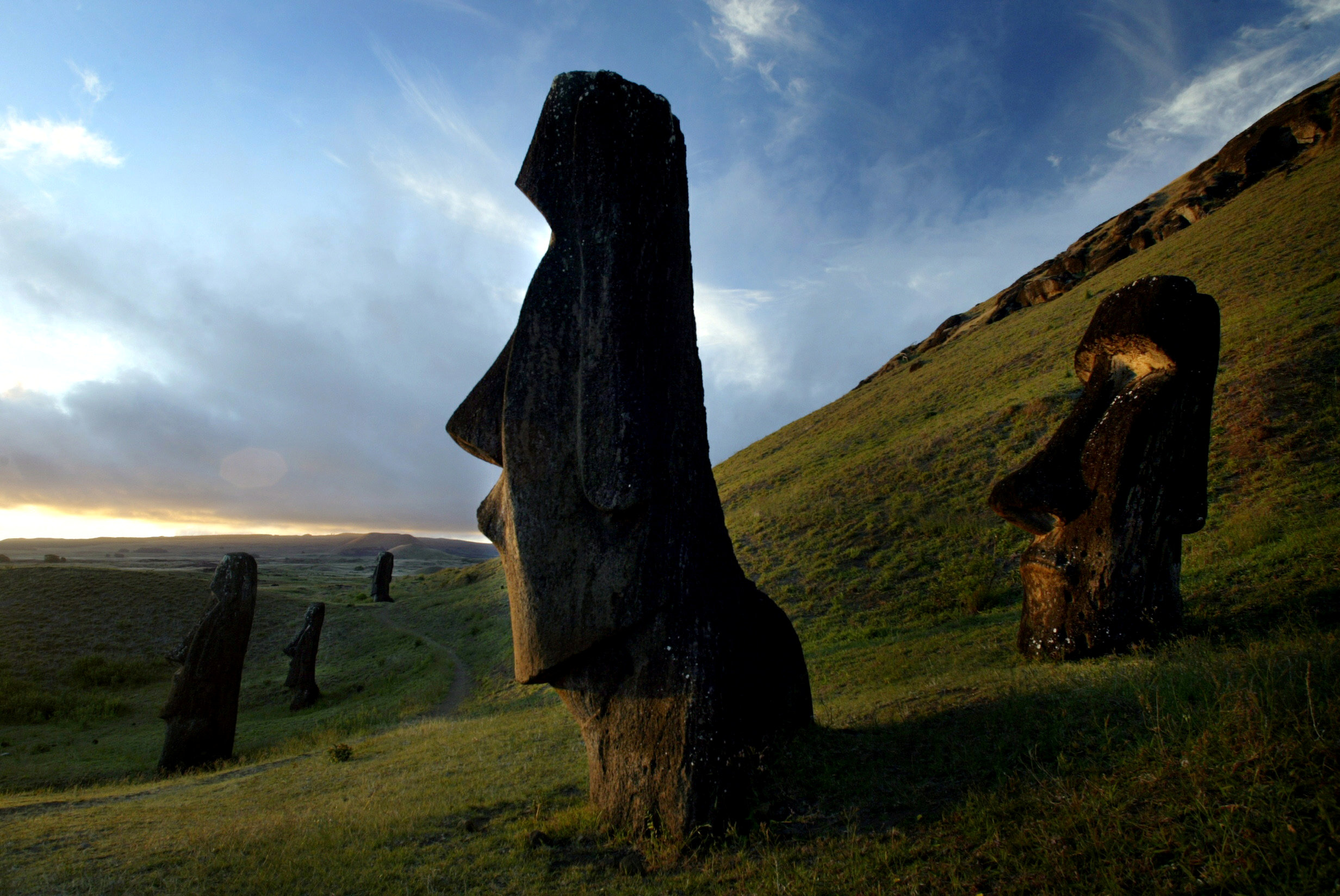Image: FILE PHOTO: A view of “Moai” statues in Rano Raraku volcano, on Easter Island, Chile on October 31, 2003. REUTERS/Carlos Barria/File photo
![]()
By Will Dunham
WASHINGTON (Reuters) – The massive brooding stone figures peering from Easter Island’s hillsides are emblematic of the enigmatic people who once thrived on the dot of land in the middle of the Pacific. New genetic research only deepens the mystery around these people.
Scientists said on Thursday an analysis of DNA from ancient skeletal remains ruled out the likelihood that Easter Island’s inhabitants intermixed with South Americans before the arrival of Europeans on the island in 1722.
A 2014 genetic study had indicated interbreeding between the people of Easter Island, or Rapa Nui, and native people in South America occurred roughly between 1300 and 1500. The new research, studying the DNA of three Rapa Nui people from the 1400s and 1500s and two from the 1800s, found no evidence of such mingling.
The research underscored the isolation of these people, who lived on an outpost some 2,300 miles (3,700 km) west of South America and 1,100 miles (1,770 km) from the nearest island.
“Our study shows that there is no simple scenario of population exchange and migration between Rapa Nui and the Americas as suggested by many archaeologists, historians, population geneticists and even adventurers,” said archaeologist Cat Jarman of the University of Bristol in Britain.
Jarman said the study, published in the journal Current Biology, confirmed a growing body of evidence that Easter Island was settled by Polynesians who crossed the open ocean.
“We were surprised that we didn’t find any Native American admixture in our ancient Rapa Nui individuals,” Jarman added.
The Rapa Nui people formed a unique culture best known for the 900 monumental head-and-torso stone statues known as moai erected around Easter Island. The culture flourished starting around 1200.
The study did not rule out some type of cultural contact between Easter Island and South America. “However, if it did take place, the new evidence suggests that it was infrequent or, at least, that it did not leave a discernible genetic trace,” Jarman said.
University of California-Santa Cruz anthropologist Lars Fehren-Schmitz said evidence like the presence of sweet potatoes, a South American staple, in Polynesia indicates some cultural exchange occurred between the Americas and Polynesia before the impact of European colonization.
“Many researchers suggest Rapa Nui as kind of the best point of contact because it is closest to South America, but an exchange could have also been initiated on other islands, if it happened,” Fehren-Schmitz added.
(Reporting by Will Dunham; Editing by Jonathan Oatis)
Copyright 2017 Thomson Reuters. Click for Restrictions.


